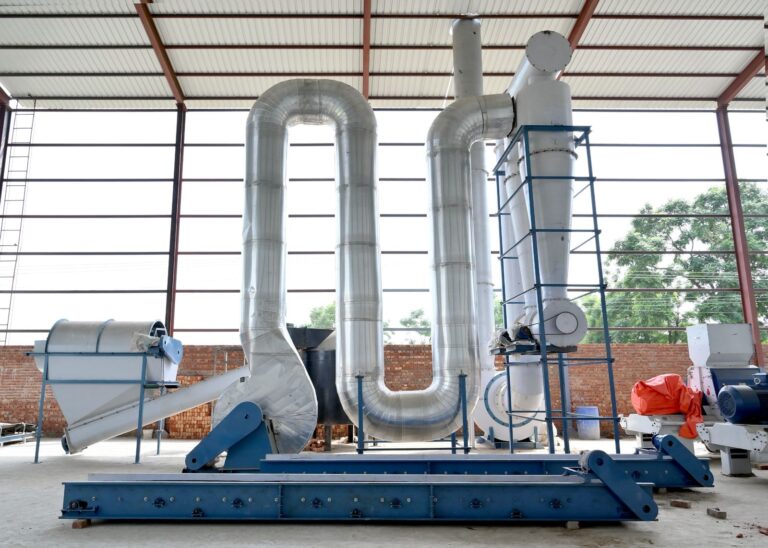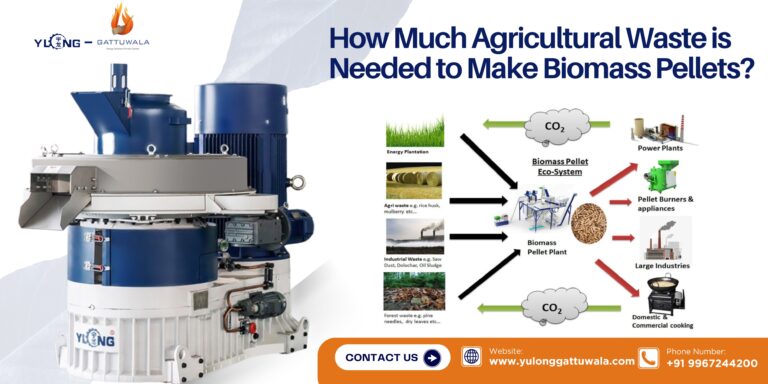- August 21, 2025

India is witnessing a growing demand for clean and renewable energy sources. Among them, biomass pellets have gained popularity as an affordable, eco-friendly, and sustainable alternative to coal and fossil fuels. For entrepreneurs, industries, and farmers looking to enter this sector, one of the most common questions is: What’s the cost to set up a biomass pellet plant in India?
In this article, we break down the key factors that influence costs, typical investment ranges, and how you can maximize your return on investment.
1. Understanding a Biomass Pellet Plant
A biomass pellet plant converts agro-waste such as rice husk, sugarcane bagasse, groundnut shells, sawdust, and paddy straw into high-density fuel pellets. These pellets are widely used in:
• Power plants
• Boilers in industries (textile, paper, cement, etc.)
• Household heating solutions
• Export markets in Europe and Asia
The plant typically includes machinery like a hammer mill, dryer, pellet machine, cooler, and packing system.
2. Factors Affecting the Cost of Setting Up
The cost to establish a pellet plant depends on several variables:
a) Plant Capacity
• Small-scale plant (250–500 kg/hr): ₹12–20 lakhs
• Medium-scale plant (1–2 TPH): ₹50 lakhs – ₹1.5 crore
• Large-scale plant (5–10 TPH): ₹3–8 crore
Higher capacity plants require bigger machines, stronger infrastructure, and more manpower.
b) Machinery and Technology
The choice of machine brand (Chinese vs. European vs. Indian manufacturers) significantly impacts the price. For example, premium pellet machines like Yulong-Gattuwala may cost more but offer higher durability, better pellet quality, and lower maintenance.
c) Raw Material Availability
If agro-waste is easily available nearby, raw material costs reduce. Otherwise, transportation expenses will add to operational costs.
d) Land and Infrastructure
Setting up a 1–2 TPH plant generally requires 1–1.5 acres of land. Land costs vary depending on the location (industrial zones are more expensive but closer to buyers).
e) Power Supply
Pellet plants consume significant electricity. A 1 TPH plant may need around 200–250 HP of connected load. In areas with unstable electricity, entrepreneurs may need to invest in a diesel generator.
f) Manpower and Operations
Hiring skilled operators, laborers, and supervisors also adds to recurring costs.
3. Approximate Investment for a Biomass Pellet Plant in India
Here’s a rough breakdown of costs for a 1 TPH biomass pellet plant:
• Machinery & equipment: ₹45–60 lakhs
• Civil work & shed: ₹15–25 lakhs
• Electrical & installation: ₹10–15 lakhs
• Miscellaneous (transport, labor, spares): ₹5–10 lakhs
Total Estimated Cost: ₹75 lakhs – ₹1.1 crore
For a 5 TPH plant, this cost can go up to ₹5–7 crore.
Government Subsidies and Support
To promote renewable energy, the Government of India provides subsidies under:
• MNRE (Ministry of New and Renewable Energy) biomass projects
• State-level renewable energy development agencies
• Priority lending and bank loans under green energy schemes
Entrepreneurs can save up to 15–30% of the project cost through subsidies and tax benefits.
The cost of setting up a biomass pellet plant in India ranges from ₹20 lakhs for a small-scale unit to over ₹7 crore for large plants, depending on capacity and technology. With rising demand for renewable energy and government support, investing in biomass pelletization is not just profitable but also contributes to a greener India.
If you are considering entering this business, choosing reliable partners like Yulong-Gattuwala ensures long-term success with advanced technology, higher efficiency, and after-sales support.
Biomass is no longer a by-product—it’s the future of energy. And the government is ensuring that future arrives faster.
📞 Interested in setting up a biomass pellet plant in India? Contact Gattuwala Energy for expert consultation, equipment, and government subsidy support.




